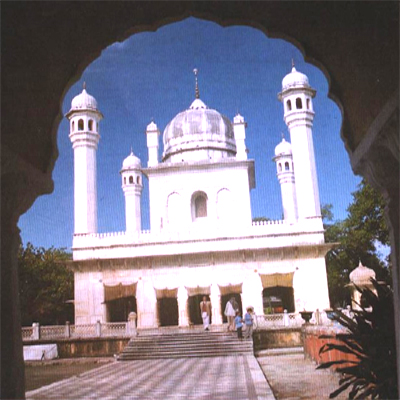 History of Saharanpur District states that the physical features of the district have proved that the region was fit for human habitation. The archaeological survey has proved that the evidence of different cultures is available in this area. The excavations were carried out in different parts of Saharanpur District namely Ambakheri, Bargaon, Hulas, Bhadarabad and Naseerpur etc. A number of things have been found during these excavations, on the basis of which, it is established that in Saharanpur district, the earliest habitants were found as early as 2000 BC. As per the history of Saharanpur District, this region is connected with Indus Valley Civilization. It is stated that Ambakheri, Bargaon, Naseerpur and Hulas were the centres of Harappa culture because many things similar to Harappan civilization were found in these areas.
History of Saharanpur District states that the physical features of the district have proved that the region was fit for human habitation. The archaeological survey has proved that the evidence of different cultures is available in this area. The excavations were carried out in different parts of Saharanpur District namely Ambakheri, Bargaon, Hulas, Bhadarabad and Naseerpur etc. A number of things have been found during these excavations, on the basis of which, it is established that in Saharanpur district, the earliest habitants were found as early as 2000 BC. As per the history of Saharanpur District, this region is connected with Indus Valley Civilization. It is stated that Ambakheri, Bargaon, Naseerpur and Hulas were the centres of Harappa culture because many things similar to Harappan civilization were found in these areas.
From the days of Aryans, the history of Saharanpur region is traceable in a logical manner. The history of the area goes back to ages. With the passage of time its name changed. During the reign of Iltutmish, Saharanpur became a part of the Slave Dynasty. Muhammad Bin Tughlaq reached northern Doab to crush the rebellion of Shivalik Kings. There he came to know about a Sufi saint on the banks of `Paondhoi` river. He met him and thus ordered that henceforth the place should be called as `Shah-Harunpur` by the name of Saint Shah Harun Chisti.
Akbar was the first Mughal ruler who established civil administration in Saharanpur and made it `Saharanpur-Sarkar` under Delhi province and appointed a Governor. The Jagir of Saharanpur was honoured to Raja Sah Ranveer Singh who founded the city of Saharanpur. At that time Saharanpur was a small village and served as army cantonment area. The nearest settlements at that time were Shekhpura and Malhipur.
Further, the history of Saharanpur District describes that this region passed to the British in 1803. The founders of Darul Uloom Deoband, actively participated in the rebellion, organized the masses outside Delhi and, for a while, were successful in ousting the British authority from the area of their operation. The centre of their activities was Shamli. After 1857, the cultural and political history of Muslims revolved around Aligarh and Deoband. They wanted to achieve religious and social consciousness by peaceful methods. Deoband Madarsa was making efforts for promoting nationalism. Thus, the district became centre of activity of Deoband School Ulama. The school played an important role in the revolutionary activities organized for the country`s freedom.



















